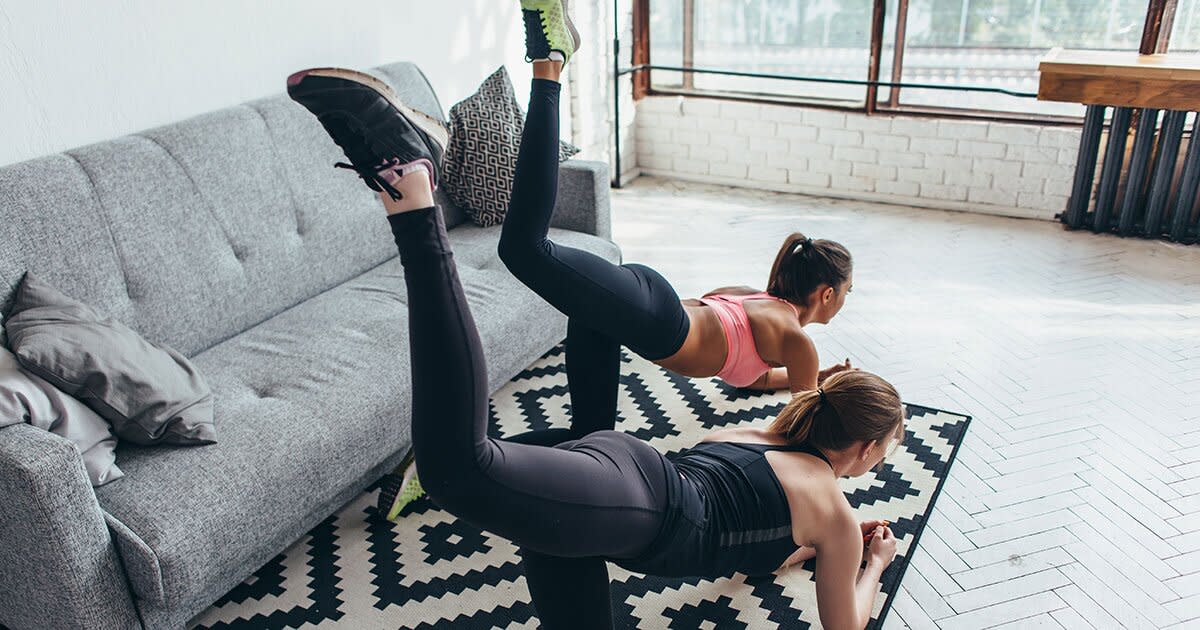Is It Possible to Do Too Many Butt Workouts?

Photo: undrey / Getty Images
Butts have been having a moment for, like, years now. Instagram is ripe with #peachgang photos and every iteration of butt exercises-from squats and glute bridges to mini-band moves-currently known to (wo)man.
But is it possible to go overboard on butt workouts? Short answer: Yes, but it's not quite that simple. Here's what experts have to say.
Good News: You Probably Need Most of That Butt Work
"Generally speaking, most people have weak glutes," says Tara Romeo, C.S.C.S., C.E.S., a strength coach, corrective exercise specialist, and director of the Professional Athletic Performance Center in Garden City, NY. "We tend to be a very quadriceps-dominant society, just by the way we move."
Even if some of your glute muscles are strong, others might be slacking. Quick glute anatomy lesson: Your glutes comprise the gluteus maximus (the biggest muscle in your butt), the gluteus medius (the outside of your hip), and gluteus minimus (at the top of your butt). Under those, there are a bunch of small muscles that act on your hip joint, working to make your leg rotate, abduct (move outward away from you), or adduct (move inward toward your midline).
"Most people have some strength in the major part of their glutes and hamstrings because we use these walking, climbing steps, biking, etc.," says Andrea Speir, founder of Speir Pilates. "The other super-important areas of our backside-glute medius and glute minimus-are generally weak since we don't target them as much as we should."
And it's not just about having brute strength-even if each and every one of those muscles is strong, you may not be using them correctly. "Not only do our glutes tend to be weak, but it's very common that most individuals cannot activate the muscle properly," says Romeo.
The solution must be more butt workouts, right? (After all, there are a lot of reasons it's important to have a strong butt.) Not so fast.
Too Much of a Good Thing
"Overtrained or overactive glutes, if not adequately stretched or rolled out, will lead to extremely tight muscles," says Matty Whitmore, a trainer at the Bay Club in Los Angeles. For one, "this could potentially impinge the sciatic nerve," he says. (Piriformis syndrome, for example, can happen when your piriformis-a small muscle deep in your butt-is tight or inflamed and presses on your sciatic nerve, causing potential back, leg, and butt pain.)
Having tight or overactive glutes "can also pull on the joints, shifting them out of alignment, causing muscular imbalances, which can ultimately lead to injury," says Whitmore.
FYI: There are muscles on the front and back of your hip joints (including all the muscles in your glutes) that pull your pelvis in different directions. If one muscle group is tight and another is weak, things can go awry. "The combination of overactive and underactive muscles can alter normal movement patterns, which then can have negative long-term effects on the body and the way you move," says Romeo. (Related: How to Diagnose and Fix Your Muscle Imbalances)
So even if you're trying to build glute strength, you can't safely do it without properly strengthening the other muscles in the area too.
"If you work your booty too much without giving any love to your core, legs, or postural muscles, it can often cause tightness in the low back," says Speir. Imagine doing a squat: Your hips flex and tighten, and your glutes do the work. "This tightness in the front creates a sway in the back over time, which can cause discomfort. You want to make sure you are also elongating the front of the body, working your abs and back, and stretching to help prevent lower back tightness."
The Right Way to Booty-Werk
Aim to do butt exercises two to three times a week, says Romeo. That'll keep them strong without overdoing it.
Also crucial: Making sure you're actually doing the exercises right. "If you're unable to activate the muscle, it's impossible to actually work the muscle," says Romeo.
Start by doing a glute activation test: Lie on your back with both legs extended on the floor and a hand under each butt cheek. Without flexing or activating your quadriceps muscles, focus on squeezing the right glute and left glute separately. Once you are able to isolate this movement, progress by bending your knees and repeat the squeezes. Once you've mastered that, practice these squeezes standing, says Romeo. (Try these other glute activation exercises too.)
Master the pelvic tilt: "Learning how to pelvic tilt is the key ingredient to the success of all exercises," says Romeo. The goal is to maintain a neutral pelvis and spine. Think: If your pelvis was a big bucket full of water, it wouldn't spill out the front or the back. (Here's a full guide on how to master the pelvic tilt and use it properly during strength exercises.)
Balance it out: "It's common that someone with weak or inactive glutes will also have weak abdominal muscles. This weak duo will cause tight hip flexors and a tight lower back," says Romeo. Make sure that for every glute exercise, you're also doing an abs exercise like a plank (focusing on maintaining that neutral pelvic tilt while you're holding it). Many people also neglect to work their glute medius (the outside of your hip/glute) during butt workouts, says Speir. Try clamshells and other hip-opening exercises with a mini band to strengthen that important part of your butt.
Don't forget to stretch: Keep your glute muscles from getting too tight by foam rolling your glutes, and doing spinal stretches, a figure-four stretch, hamstring stretches, and hip flexor stretches, says Speir.
"Always remember: Too much of anything can be bad, and life is about balance and moderation," says Whitmore.

